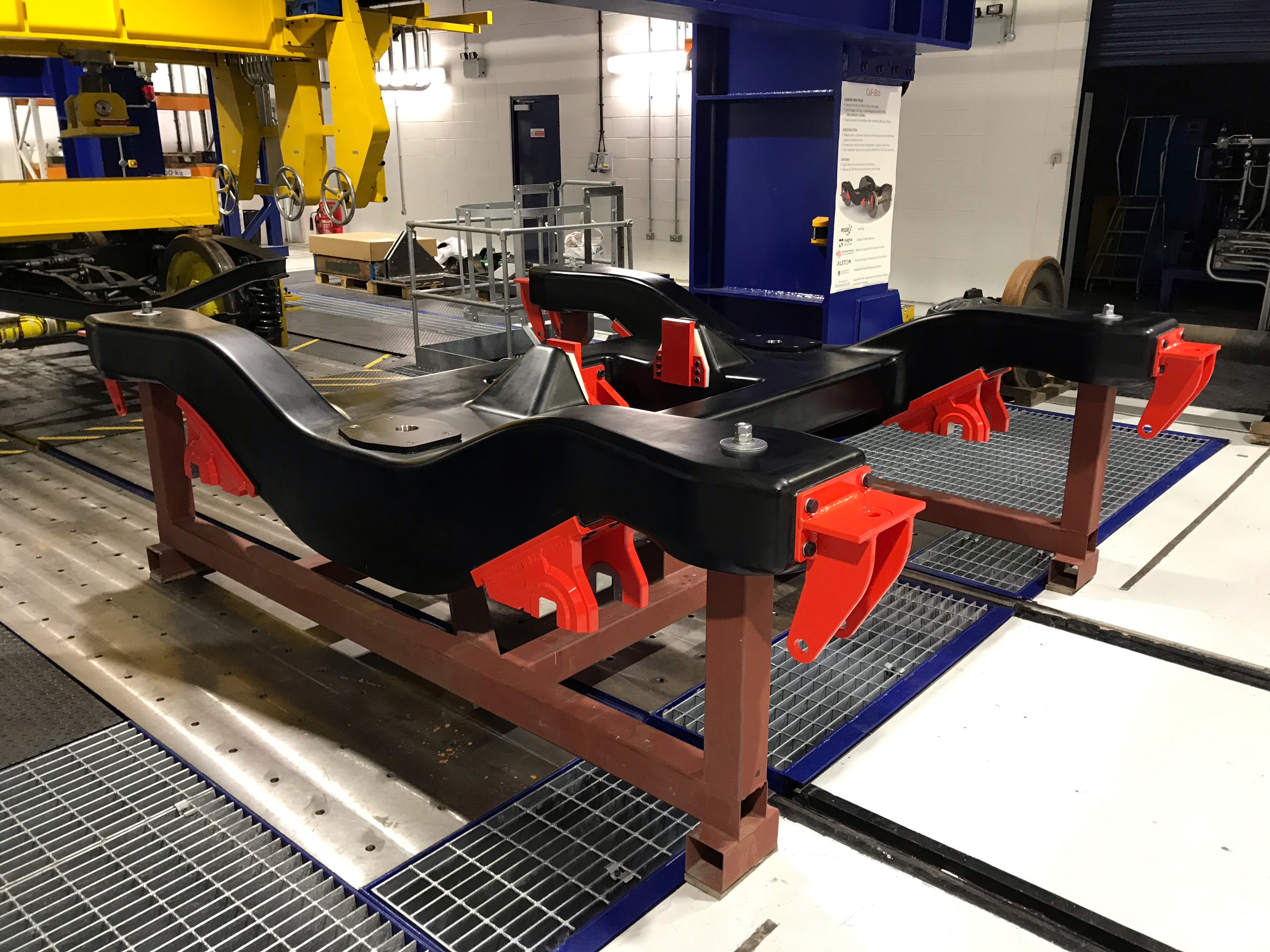
ELG says that it has developed the world’s first carbon fiber bogie in collaboration with the UK University of Huddersfield’s Institute for Railway Research.
Railway bogies, called trucks in the US, is a chassis or framework that carries a wheelset, attached to a vehicle. According to the company, the bogie is made entirely out of surplus and recycled carbon fiber materials which can help reduce track wear and infrastructure maintenance costs by reducing vertical and transverse loads on the rails. It features an embedded health monitoring system which can improve reliability and has reduce energy consumption, ELG says.
The bogie is being developed as part of a two-year program delivered by a consortium of companies comprising of ELG Carbon Fibre, Magma Structures, the University of Birmingham and the University of Huddersfield with additional support from Alstom.
‘Replacing steel with recycled carbon fiber to produce a rail bogie is a world first so it is a hugely exciting and rewarding project to be part of,’ said Frazer Barnes, MD of ELG Carbon Fibre. ‘We hope to make recycled carbon not only an attractive option for the rail industry in terms of weight reduction but also to eliminate waste and drive down cost.’
‘There are significant potential benefits from adopting novel materials and construction methods in railway vehicle bogies,’ said Simon Iwnicki, Director of the Institute of Railway Research. ‘The reduction in mass results in energy savings but can also reduce track forces and improve dynamic performance.’
This story uses material from ELG, with editorial changes made by Materials Today. The views expressed in this article do not necessarily represent those of Elsevier.





